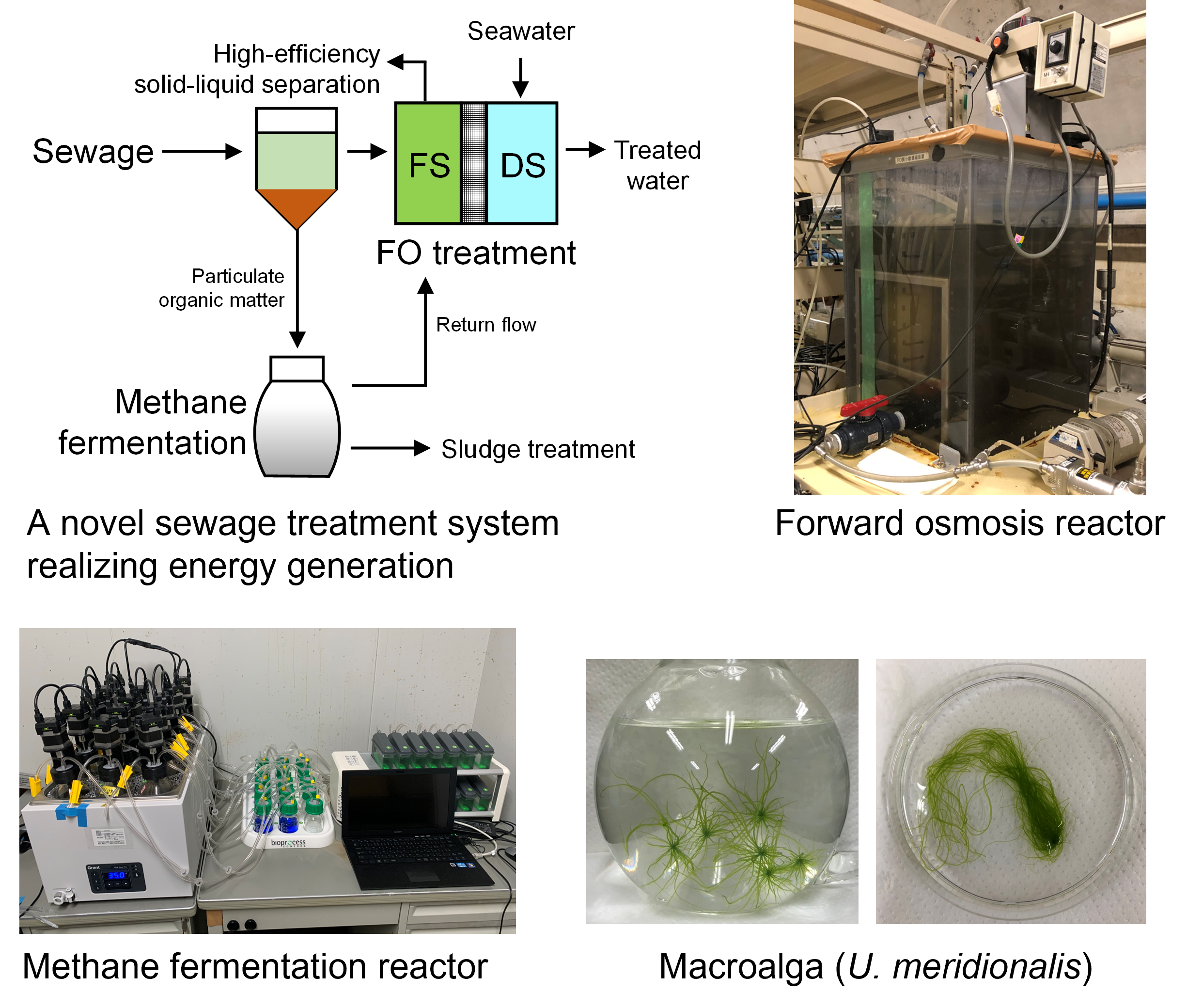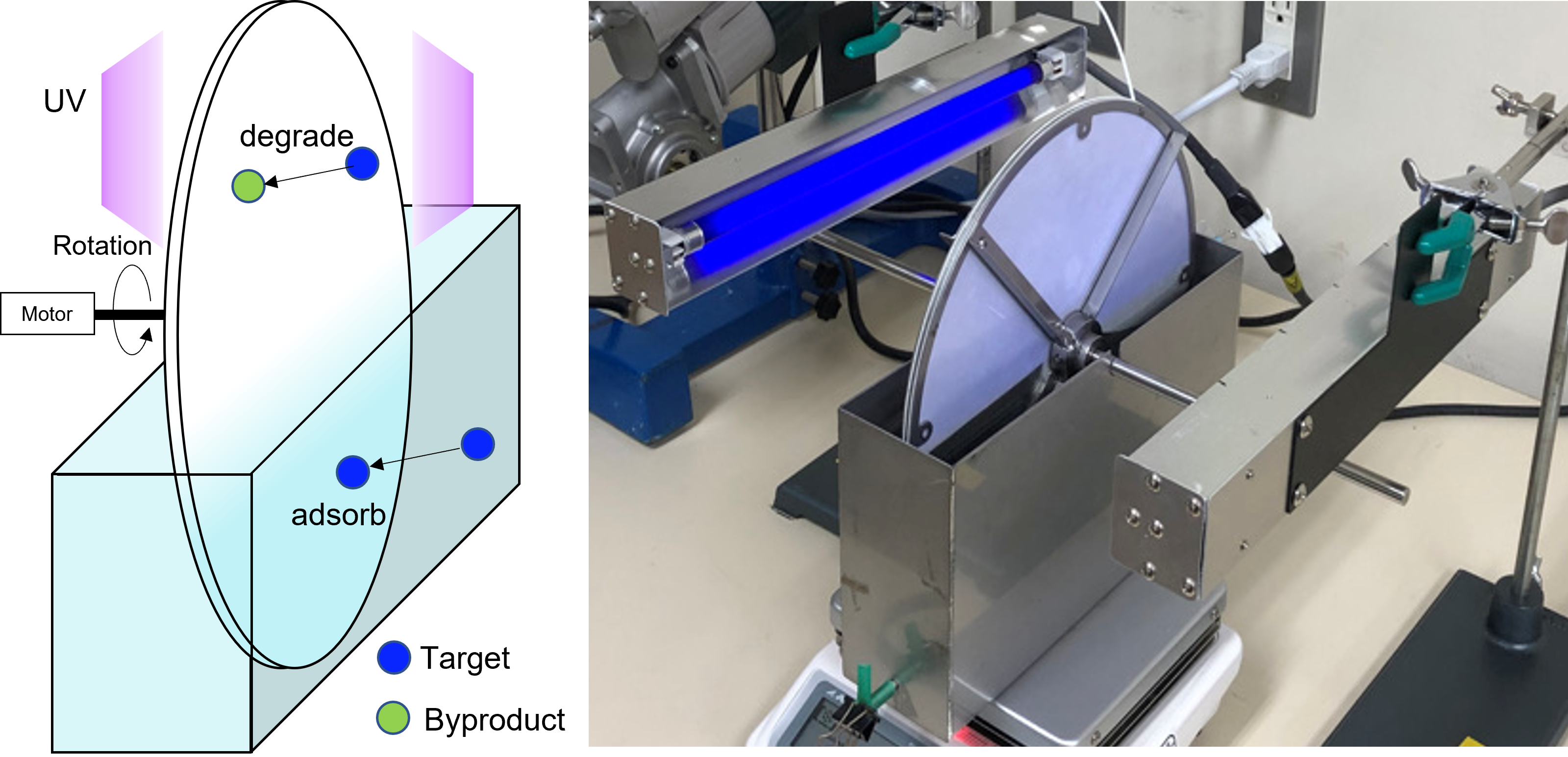Building a future sewage system that contributes to a carbon society and creates added value
To transform sewage treatment plants into energy supply bases, we aim to build a new concept sewage treatment system that fully utilizes the resources in sewage to create value. A high-efficiency solid-liquid separation tank and a forward osmosis (FO) treatment tank simultaneously achieve organic matter concentration and sewage treatment, and the concentrated organic matter is converted into energy by a methane fermentation tank. Regarding methane fermentation, we will also work on developing technology to convert hydrogen derived from renewable energy into methane and will also contribute to turning existing sewage treatment plants into energy hubs. Through a series of research such as elucidating the mechanism of greenhouse gas generation from existing sewage treatment plants and developing countermeasure technologies, we aim to realize sewage systems that contribute to a decarbonized society. Furthermore, we will establish a culture technology for macroalgae that utilizes treated sewage water, and work to build systems that generate added value, such as manufacturing chemical products based on the accumulated polysaccharides.

Building a regional resource circulation system through cooperation between sewage treatment facilities and agriculture
Water, energy, and food are essential resources for human survival, and it is necessary to build a regional resource circulation system that takes into account the mutual relationships between each. Collaboration between sewage treatment facilities and agriculture in small and medium-sized cities is important from the perspective of linking water, energy, and food, and we aim to create value through a cascade-type resource circulation system that takes into account the quality of wastewater and waste. In addition, we will develop small-scale wastewater treatment and methane fermentation technology that combines lactic acid fermentation, photosynthetic bacteria, algae culture, and so on and aim to optimize the use of biomass resources with methane fermentation at the core, as well as attempt to improve the fertilizer value of fermentation residue. Furthermore, we will examine a system that utilizes the heat and carbon dioxide generated by methane fermentation in greenhouses and consider the appropriate placement of sewage treatment plants and greenhouses from the perspective of creating value in the region.
Elucidation of physical and chemical water treatment mechanisms and technological development
In public water and sewage treatment, even though the concentration is extremely low, the presence of chemical substances and pathogenic microorganisms of concern for odor and taste (drinking water), human health effects (drinking water and sewage), and effects on aquatic ecosystems (sewage) has been pointed out. Some of these cannot be removed using conventional treatment methods that utilize biological reactions, and there are high expectations for physical and chemical water treatment using ultraviolet rays, ozone, photocatalysts, adsorbents, etc. To optimize the design and operation of these treatment methods, we conduct research using both empirical and theoretical analysis approaches. In particular, we focus on achieving a balance between substances to be removed and substances to be suppressed, evaluation of the reactivity of organic substances as coexisting substances, impact on processing performance of organic substances, and energy saving. Furthermore, we are working on the development of a new accelerated oxidation treatment device that utilizes titanium oxide/high silica type zeolite composite sheet.


